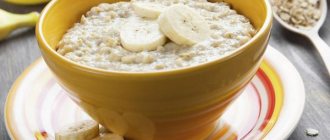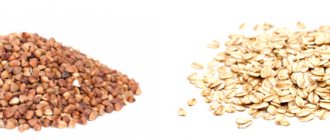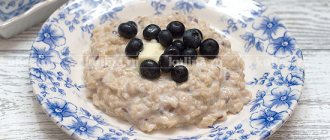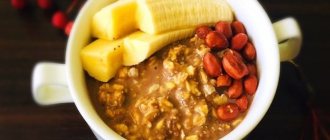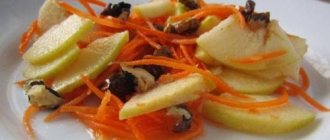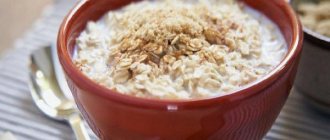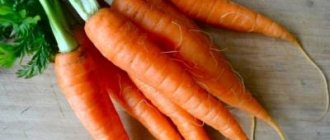What is fiber?
The human body absorbs many different substances from incoming food - fats, proteins, carbohydrates, microelements, etc. However, there are elements in the food that seem to be just ballast - but without them the gastrointestinal tract either does not work at all, or functions with impairments. And in first place among these substances is fiber. This term refers to fibers that are primarily found in foods of plant origin. They are not directly absorbed by the cells of the digestive system, but they perform two important functions:
- They serve as food for beneficial intestinal microflora, which in turn are human symbiont organisms.
- They create a “ballast load” on the intestines, ensuring its normal peristalsis.
Fiber is a collective term because it includes a number of different substances:
- Insoluble. This is primarily lignin, a substance that makes up the walls of plant cells. Also insoluble is cellulose, a polysaccharide that is also a component of plant cell walls.
- Soluble. These are various types of non-cellulosic polysaccharides. There are many varieties of them: hemicellulose of various forms, guar, mucus, gum, etc. Their main feature is that they form a gel-like mass that can undergo microbial fermentation in the large intestine.
Types of fiber
Dietary fiber is divided into two types: soluble and insoluble.
The first ones absorb liquid and turn into a soft gel. They can increase in size up to 10 times, which increases the volume of stool and softens it - this is how fiber works against constipation.
Insoluble fiber mechanically stimulates the intestinal wall, increasing peristalsis and promoting the natural elimination of feces without affecting the receptors (unlike stimulant laxatives). Both types of fiber should be supplied to the body; this will ensure smooth functioning of the digestive system and regular bowel movements.
Why is fiber needed?
Humans are not herbivores, and their gastrointestinal tract cannot directly absorb fiber. However, it performs a number of very important functions in nutrition:
- It provides food volume. In order for peristalsis to occur normally, food must fill the intestinal lumen, putting pressure on its walls, which improves passage through the intestines and avoids constipation.
- Fiber cleanses the intestines. To greatly simplify it, we can say that its particles work like a brush, cleaning out everything that has stuck to the walls of the gastrointestinal tract. Without this, “blockages” again begin, fecal stones (coprolites) form, etc.
- Fiber slows down the absorption of sugars and other carbohydrates. Therefore, foods high in dietary fiber help normalize blood glucose levels. This allows you to avoid surges, reduces hunger and helps you avoid gaining excess weight.
- Dietary fiber is not digestible by humans, but serves as food for the intestinal microflora. Some substances (such as lignin) are not used by microbes, but everything else completely or partially serves as food for them.
Fiber – dietary fiber for health
Are you watching how much fiber you consume per day? As a rule, most of us limit ourselves to counting calories and the ratio of proteins, fats and carbohydrates. However, a diet can only be called balanced if it contains a sufficient amount of fiber. Fiber is insoluble plant dietary fiber, the main component of plant foods. It is not absorbed by the body and yet performs many useful functions.
How to simply and clearly understand what fiber is Imagine that you are making juice from vegetables or fruits. Put them in the juicer, whack, and the drink is ready. Then you clean the gadget container from the pulp. Everything you throw away is fiber.
What kind of fiber is there?
There are two types of fiber - soluble and insoluble, and both of them are needed and do not replace one another. The good news is that they are practically inseparable and are simultaneously present in foods containing fiber. The most soluble fiber (pectin, hemicellulose, resin, alginase, gum) is found in apples, broccoli, citrus fruits, wholemeal flour, berries, buckwheat, oatmeal, nuts, and legumes. Insoluble (cellulose, lignin) - in the peels of vegetables and fruits, legumes, brown rice, bran.
What does fiber do?
– Normalizes intestinal microflora, which is the prevention of gastrointestinal diseases. Fiber acts as a prebiotic; it increases the number of beneficial microorganisms: lactobacilli and bifidobacteria. Intestinal microflora affects the correct functioning of absolutely all other organs, improves immunity and reduces stress levels. – Acts as an absorbent and removes toxins: foods rich in fiber top the list of antioxidants – Quickly fills you up and at the same time reduces the feeling of hunger, therefore helps to maintain slimness – Inhibits the absorption of carbohydrates, especially fast ones, that is, acts as an insulin assistant, regulating the rise in blood glucose levels – Removes cholesterol and protects the cardiovascular system, fights atherosclerosis – Reduces the risk of developing cancer
What's the norm?
According to studies, our diet contains insufficient fiber, which leads to an increase in cardiovascular and gastrointestinal diseases. Our ancestors ate a lot of vegetables: they were cheaper and more accessible than meat, and they baked bread from whole grain flour. The rapid growth of production has made adjustments to nutrition. Cereals began to be peeled, and premium flour appeared. Then chemists made their contribution in the form of taste enhancers, “hooking” us on fast food. Compared to them, the natural taste of cauliflower or spinach does not look very expressive.
Nutritionists recommend consuming 34 grams of fiber for men and 28 grams for women as a daily requirement for an adult (over 18 years of age).
We urge you to reconsider your views on nutrition, if now it is far from ideal. Try to give up artificially tasty food or at least reduce its amount in favor of healthy foods. In a short time you will feel changes on a physical and psychological level. The same cauliflower or spinach, cooked with bright spices, will reveal a completely new side to you.
4 tips on how to easily and comfortably introduce fiber into your diet
If there is a lack of fiber in your diet and you decide to correct the situation, do it gradually. A sudden increase can lead to flatulence, so add 1-2 grams daily.
– Eat vegetables and fruits with peels, they contain the most dietary fiber. But avoid juices: they have no fiber left. So, in 100 grams of orange there is 2.5 grams of fiber, in 100 ml of orange juice – 0.2 grams. Do you feel the difference? Try drinking smoothies, they are the easiest way to “get” the required daily amount of not only fiber, but also vegetables (400 grams) and fruits (500 grams).
– Replace the usual side dishes with vegetable ones, diversify the menu with salads. Whenever possible, add vegetables and fruits to every meal and replace snacks and cookies with them. – Include legumes in your list of required daily foods. Expand your culinary palette of dishes. For example, lentils. It can be used to make pancakes for breakfast, soup for lunch and curry for dinner. – Don’t forget about nuts: they will provide fiber and enhance the taste of the dish. Pistachios, peanuts and almonds contain the most fiber.
Fiber norm for humans
The amount of dietary fiber needed for a healthy diet varies depending on gender, age, the body's adaptation to different types of diet, and other factors. However, on average, we can assume that a person needs to take from 35 to 50 grams with food per day. fiber. Is this standard being observed?
Unfortunately no. As studies by nutritionists show, most people on average do not gain 15 grams per day. There are several reasons for this:
- Eating purified and refined foods. The absence of husks and impurities improves taste and quality - but leads to “starvation” for fiber.
- Boiling, frying and other types of processing also break down fiber.
What to do? After all, switching to eating raw plant foods is problematic. The solution is to eat foods that are so rich in fiber that cleaning and heat treatment does not harm this component.
Why is fiber deficiency dangerous?
If fiber is not broken down by the human body, a logical question arises: “Why introduce this substance into the diet?” To answer this, you first need to know that fibers are divided into coarse and soft []. Coarse dietary fibers (cellulose, hemicellulose, lignin) are usually insoluble in water. If there is no coarse dietary fiber in the menu, the following undesirable changes may occur in the body:
- Constipation. Fiber speeds up the passage of food through the intestines; it is our “cleaner”. In the absence of fiber, the body's ability to cleanse itself suffers.
- Decreased immunity. Coarse dietary fiber provides nutrition for beneficial intestinal bacteria. The normal microflora of the digestive tract makes the intestinal wall impermeable to toxins, prevents pathogenic bacteria from colonizing, and releases substances that stimulate the immune system.
- Diseases of the large intestine. Fiber plays the role of a “trainer” for the muscles of the intestinal wall. In its absence, the intestines lose elasticity, hemorrhoids, lateral protrusions (diverticula), and inflammatory processes may appear.
- Increased appetite. This undesirable effect is associated with a deficiency of normal microflora, which secretes substances that reduce appetite []. If beneficial bacteria are not “fed” with fiber, they are replaced by harmful microorganisms that can increase the accumulation of fat reserves, which can lead to weight gain.
Soft dietary fibers are pectins, gums, dextrins and mucilages. They are soluble and capable of binding a large volume of water, many times their own weight. If there is not enough soft dietary fiber in the diet, this threatens:
- Overeating. Once in the body, soft dietary fiber turns into a gel-like substance, takes up a lot of space in the stomach, creates a feeling of satiety and inhibits gastric emptying. With a deficiency of dietary fiber, appetite is more difficult to control.
- Accelerating the absorption of fats and sugar. By enveloping the intestinal mucosa, dietary fiber slows down the absorption of fat and glucose into the blood after eating. When there is a lack of them in the blood, sharper jumps in sugar occur, which causes blood vessels to suffer and body weight to increase.
- Accumulation of cholesterol, toxins and radioactive substances in the body. Soluble dietary fiber is a natural sorbent that attracts and removes everything unnecessary and harmful that is in the intestines. If there is little dietary fiber in the diet, your health may deteriorate, your weight may increase, and cholesterol plaques may form in your blood vessels.
Where are the sources of fiber?
To gain the required amount of dietary fiber, you need to consider the following foods in your diet:
- Bread made from unrefined flour (whole grain).
- Bran.
- Cereal porridges - oatmeal, pearl barley, buckwheat, etc.
- Pasta, especially, oddly enough, gray - made from unrefined flour.
- Fresh fruits. Berries (blackberries, raspberries, etc.), pears and apples, as well as oranges and tangerines are especially useful.
- Vegetables – the leaders here are carrots (especially raw ones), pumpkin and broccoli.
- Nuts, especially almonds.
- Legumes - beans, peas, lentils and chickpeas.
Products containing fiber
The human body needs both soluble and insoluble fiber. Therefore, it is important not only to consume them in sufficient quantities, but also to take care of a variety of sources! Fortunately, there are no problems with diversity now.
The richest sources are:
- bran;
- dried fruits;
- legumes (beans, soybeans, lentils, chickpeas);
- whole grain based products (brown or “wild” rice, wholemeal bread, whole grain brown pasta, oatmeal, wheat and other cereals);
- Vegetables and fruits are also natural sources of fiber and should be included in your diet every day! There is a lot of fiber in vegetables such as broccoli, Brussels sprouts, asparagus, green beans;
Table of foods rich in fiber
| Product | Quantity | Fiber content, g |
| Rye and wheat bran | 100 g | 45 |
| Flax-seed | 100 g | 28 |
| Dry mushrooms | 100 g | 26 |
| Beans | 1 serving | 18 |
| Figs | 100 g | 18 |
| Almond | 100 g | 16 |
| Green pea | 100 g | 11,5 |
| Sesame | 100 g | 9 |
| Whole grain bread | 100 g | 8 |
| Sunflower seeds | 100 g | 6 |
| Oatmeal | 1 serving | 5,3 |
| Broccoli | 100 g | 5 |
| Carrot | 100 g | 4,6 |
| Pear | 1 PC. | 4,6 |
| Dates | 100 g | 3,6 |
| Apple | 1 PC. | 3,5 |
| Oat groats | 100 g | 2,8 |
| Beet | 100 g | 2,7 |
| Boiled potatoes | 1 PC. | 2,6 |
| Orange | 1 PC. | 2,6 |
| Grape | 10 pieces. | 2,5 |
| Banana | 1 PC. | 2,5 |
| Brown rice | 1 serving | 2,4 |
| Tomato | 1 PC. | 1,8 |
| Pumpkin | 100 g | 1,7 |
| Prunes | 100 g | 1,6 |
| Barley grits | 100 g | 1,4 |
| Buckwheat | 100 g | 1,1 |
| White cabbage | 100 g | 1 |
Diet balanced in fiber
There is no generally accepted diet that would contain all the necessary substances for each person - everything is individual here. However, for a healthy diet you should adhere to the following rules:
- Eat at least three fresh fruits a day (for example, three apples or pears).
- Have 3 servings of vegetable dishes in your daily diet (preferably from raw foods - for example, in the form of salads).
- There are four slices of whole grain bread.
- Be sure to consume oatmeal at least once every 2-3 days.
- Eat legumes at least 3-4 times a week.
IMPORTANT: When choosing a diet, you need to take into account the calorie content of dishes, individual tolerance, allergies, etc. If in doubt, consult your doctor.
Reviews and results
Reviews among people who have practiced this diet vary significantly. Despite good tolerance and the absence of a pronounced feeling of hunger, the results differ for everyone and amount to 2-3 kg per week.
- “... I practiced this diet for 14 days. True, I started it in the winter before the New Year, and since vegetables and especially fruits are quite expensive during this period, I used fiber purchased at the pharmacy. I add 1.5-2 tablespoons of fiber to a serving of porridge or a glass of kefir 2 times a day. My health improved somewhat, but I lost only a little weight - 2.7 kg in two weeks”;
- “... I liked the diet because I really love vegetables and fruits and increasing their content in my diet was not difficult for me. At the same time, I removed all fatty, salty and smoked foods from my diet. I was on a diet for 1.5 months. The result is 5.8 kg.”
Possible problems
Although fiber is beneficial, everything should be in moderation. If there is too much dietary fiber in the diet, gas formation (flatulence) may begin. It means that bacteria in the large intestine have actively entered the diet and have begun to break down fiber, simultaneously producing methane and other gases.
How to avoid these problems? There are several simple ways:
- Eat often, but little by little, gradually increasing the amount of fiber.
- Start your diet with morning oatmeal. It contains enough fiber, but does not stimulate flatulence.
- There are more fruits. You can replace desserts with them, add them to porridge, etc.
- Move actively. A sedentary lifestyle contributes to stagnation in the intestines, and the longer the fiber stays there, the stronger the gas formation.
Finally, you can use special fiber supplements. However, nutritionists insist: dietary fiber taken separately as a dietary supplement is not as effective as when it is mixed with the main food. Therefore, it is better to normalize your diet.
How to increase the amount of fiber in your diet
It would seem that all that is required is to consume at least 30 grams of fiber from natural products. However, fiber should be added gradually. When you suddenly increase fiber in your diet, side effects often occur, such as bloating, increased gas, and abdominal pain.
The British Association for Nutrition, Lifestyle and Medicine recommends using the rainbow principle: eating five servings of vegetables and two fruits each day, each corresponding to one of the colors of the rainbow.
You can track your results using the Food Diary, which is built into the Atlas mobile application.
Convenience foods and fast food are low in fiber and contain a lot of salt, sugar and fat.

